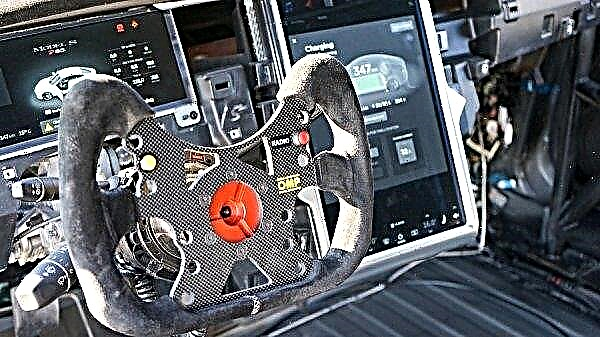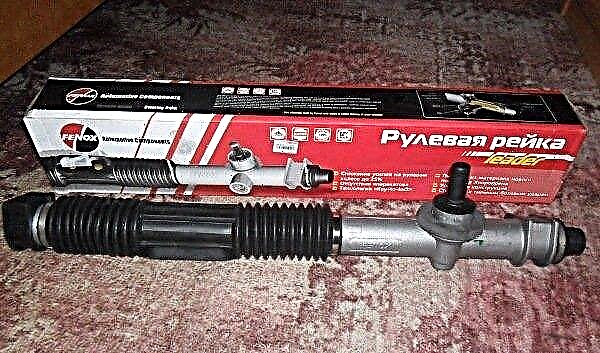
The content of the article:
- What is antifreeze
- Markings
- Antifreeze selection rules
- The need for replacement
Many inexperienced motorists often confuse antifreeze with antifreeze. A stable stereotype has developed that antifreeze is some kind of domestic tinted liquid of dubious quality, but antifreeze is a high-quality imported product. Is it so? Let's try to figure it out.
What is antifreeze

Antifreeze is the same age as the first VAZ. Automotive radiators were filled with plain or distilled water, and in severe frosts they were reinforced with viscous ethylene glycol, which prevented freezing. In addition, this mixture also saved old-fashioned cast iron engines from rusting. For such impressive properties, the liquid received the English name "antifreeze" or in Russian "non-freeze".
With the advent of VAZ, whose cooling system had completely different materials, it was necessary to create a fundamentally different, improved antifreeze. It was antifreeze - the newest coolant consisting of inorganic salts that covered metal surfaces with a kind of film from ethylene glycol.
For many years, antifreeze became the only Russian antifreeze, a brand that sets quality standards. Its production was launched by a wide variety of manufacturers, but the properties and composition were clearly regulated by the "firstborn".
Everything changed after a few decades, when the Zhiguli ceased to be a car for the “elite”. Then everything that had anything to do with them passed into the category of low-quality. Antifreeze itself began to be perceived as a coolant exclusively for the Russian car industry. Until now, in the conversations of car owners and among the sellers of specialized stores, a clear gradation slips: antifreeze - "bad", antifreeze - "good".
Markings

The task of any coolant is to cool the engine during the summer and protect it from freezing during the winter months. The basis of modern antifreeze is still ethylene glycol, now improved with all kinds of additives. Each of them performs its specific function - to clean, protect against corrosion, have antifoam and even fluorescent properties. Their quality and quantity differ depending on the brand and manufacturer.
Each liquid is clearly labeled with letters and numbers. For example, antifreeze A30M means the following:
- "A" - automobile;
- "30" is the freezing point of the liquid;
- "M" - modernized (has additives).
The color of the liquid - blue, green, red - has no functional purpose and does not affect the quality of the product. Unless, by the saturation of the shade, you can determine how much the antifreeze has worked out its resource.
Highly enriched antifreeze with AM marking differs in that it can painlessly coexist with any other coolants, Russian or imported. This indicator is important in cases where there are remnants of the previous funds poured into it in the engine cooling system.
Over the past few years, concentrated coolant has become very popular, which must be diluted in a 1: 1 ratio so as not to seriously damage the engine. This version of "non-freezing" is not used only at temperatures below 30 degrees, which, fortunately, rarely happens in our country.
Coolant is not something a car owner should save on. Therefore, you should not try to dilute it with anything, otherwise the additives added to the product will no longer perform their functions.
Antifreeze selection rules

Of course, good antifreeze cannot be cheap. White cans with poorly adhered labels, often displayed along highways, are especially dangerous. Such a mixture will definitely send the car for repair for a long time.
A really high-quality coolant practically does not affect the engine and the cooling radiator, that is, its corrosive properties are minimized - no more than 0.1 g / m2.
Also, the increased temperature of cheap coolant affects the rubber parts of the cooling system. As a result, for example, the pipes from the radiator to the engine can be deformed and lead to fluid leakage from the engine.
Poor-quality antifreeze when poured into the cooling system can significantly foam, which can cause certain problems. Real liquid also gives foaming, but no more than a couple of minutes, during which you can hold the radiator cap open.
Basic rules for the purchase of antifreeze:
It is preferable to buy a fluid for the type of engine. When using antifreeze of an unsuitable quality and type, the engine resource will be significantly reduced.
Make purchases of liquids in large specialized stores, where the likelihood of counterfeiting is reduced to a minimum. In addition, in the store you can ask to familiarize yourself with the certification documents for the product.
The container in which the antifreeze is located deserves special attention. The canister cannot be transparent and with an unevenly pasted tag. The label must contain the contact information of the manufacturer, the composition of the liquid, and have a link to the corresponding GOST.
Due to the popularity of antifreeze, antifreeze is very often counterfeited. Small firms use budget components to obtain liquid, which deprives it of all the required qualities. Therefore, you should not skimp, but give preference to the best proven manufacturers who value their reputation and adhere to the recipe. Such companies have quality certificates that confirm the reliability of the goods and the compliance with the production technology. Of course, eminent brands are not immune from counterfeiting, but this is just such a unique case when a good fake of an expensive antifreeze can really turn out to be a quality tool.
The buyer himself can check the quality of the liquid, having a litmus test with him. It is required to lower it in antifreeze and correctly determine Ph by the color obtained. A pink tint will indicate increased acidity, blue - an increased level of alkali. Both of these colors clearly indicate a clear fake. High-quality antifreeze will give a greenish tint to the indicator.
Such a check is unlikely to be allowed to be performed in the store, but in the case of purchasing a surrogate, you can return the purchase back. One of the most important indicators of antifreeze is density, it is measured by a device called a hydrometer. A good quality antifreeze should have a density of about 1.07-1.08 g / cc. Counterfeits are made from triethylene, diethylene and propylene glycol, which have a much lower density.
The need to replace antifreeze

It is recommended to change the coolant every 2 years or after every 60,000 km. You can also find out about the need for replacement by the appearance of the liquid.
A cardinal color change in comparison with the acquired one in conjunction with an unpleasant odor clearly requires replacing antifreeze.
Good antifreeze has an oily, slippery structure with a distinct color, but without any rich smell.
The cooling system should be prepared for replacing the coolant in it:
- clean with a special compound;
- drain the old liquid;
- clean with a descaling and rust remover, which is best purchased at the company store. According to the instructions on the package, this composition should flush the system for at least 20 minutes with the engine running;
- rinse the system thoroughly 2-3 times with plain water;
- pour in new antifreeze.
When carrying out these works, it should be remembered that antifreeze is very toxic, therefore, it requires caution in handling and avoiding contact with open areas of the body and eyes.











